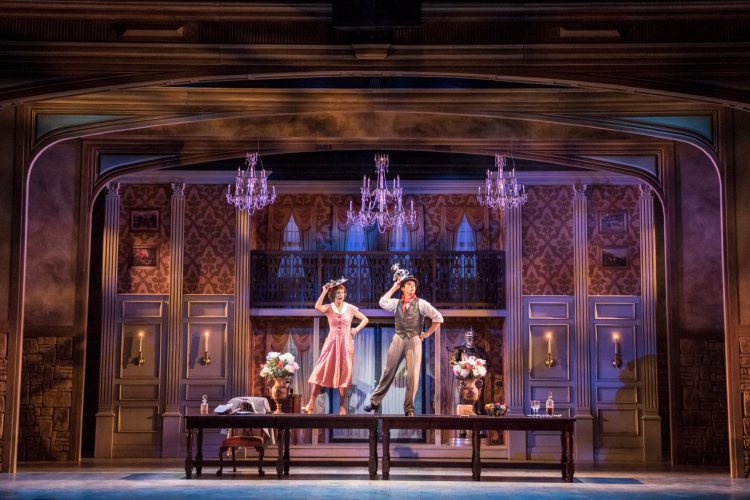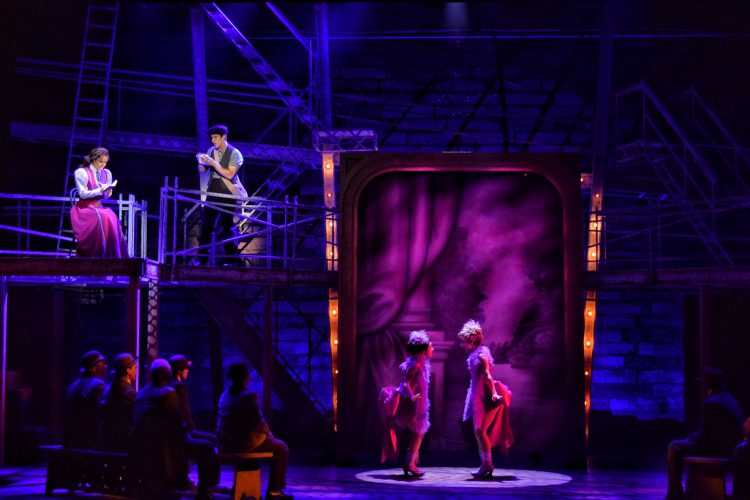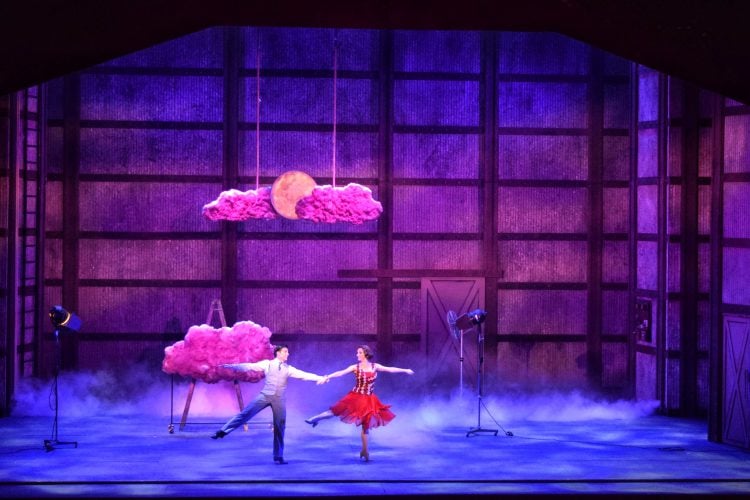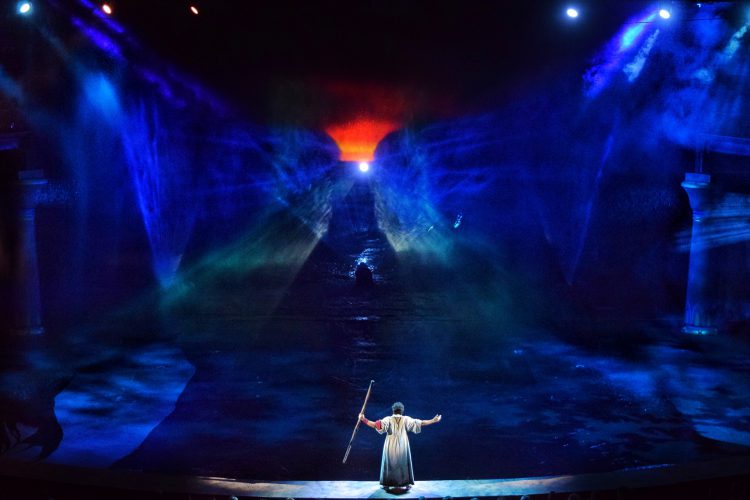In this series, guest blogger Cory Pattak discusses Eos show file setup from his perspective as a freelance designer. In this post: Effects, Submasters, Presets, Groups, Macros.
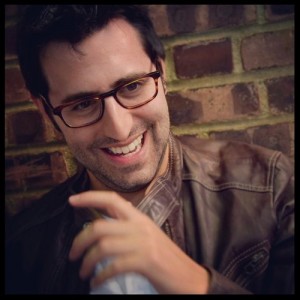
Welcome to Part 3 of this blog, where I’m sharing secrets from my Eos template file. If you’ve missed the previous two parts of this series, you can check them out here.
In the last installment, we discussed making an Eos template file with pre-existing record targets with the goal of expediting the pre-programming necessary before every show.
Let’s continue to look at other elements that can be pre-built in your template file…
EFFECTS:
A surefire way to grind tech to a halt is hitting an FX-heavy musical number. I was losing way too much time writing chases, flickers, color bounces and all other matter of musical theatre wackiness. (I should point out that my career is about 75% musicals and 25% plays…if that… so writing lots of cues that flash and pop is a regular occurrence.) Nearly all of my pre-built FX are absolute FX so they can be applied to any channels in any show.
The list includes:
- Various flickers for lightning, power outages, and ghostly apparitions
- Various intensity chases
- Marquee/Chaser Bulb movement
- Various Iris and Strobe movement
- Various Haze FX
- FX whose movement/intensity simulates rippling water, moving cars/trains, candles, and fireworks
- More specific lightning FX, some using intensity, some using strobe attributes, some using a white color palette
- Lots of Color combo chases
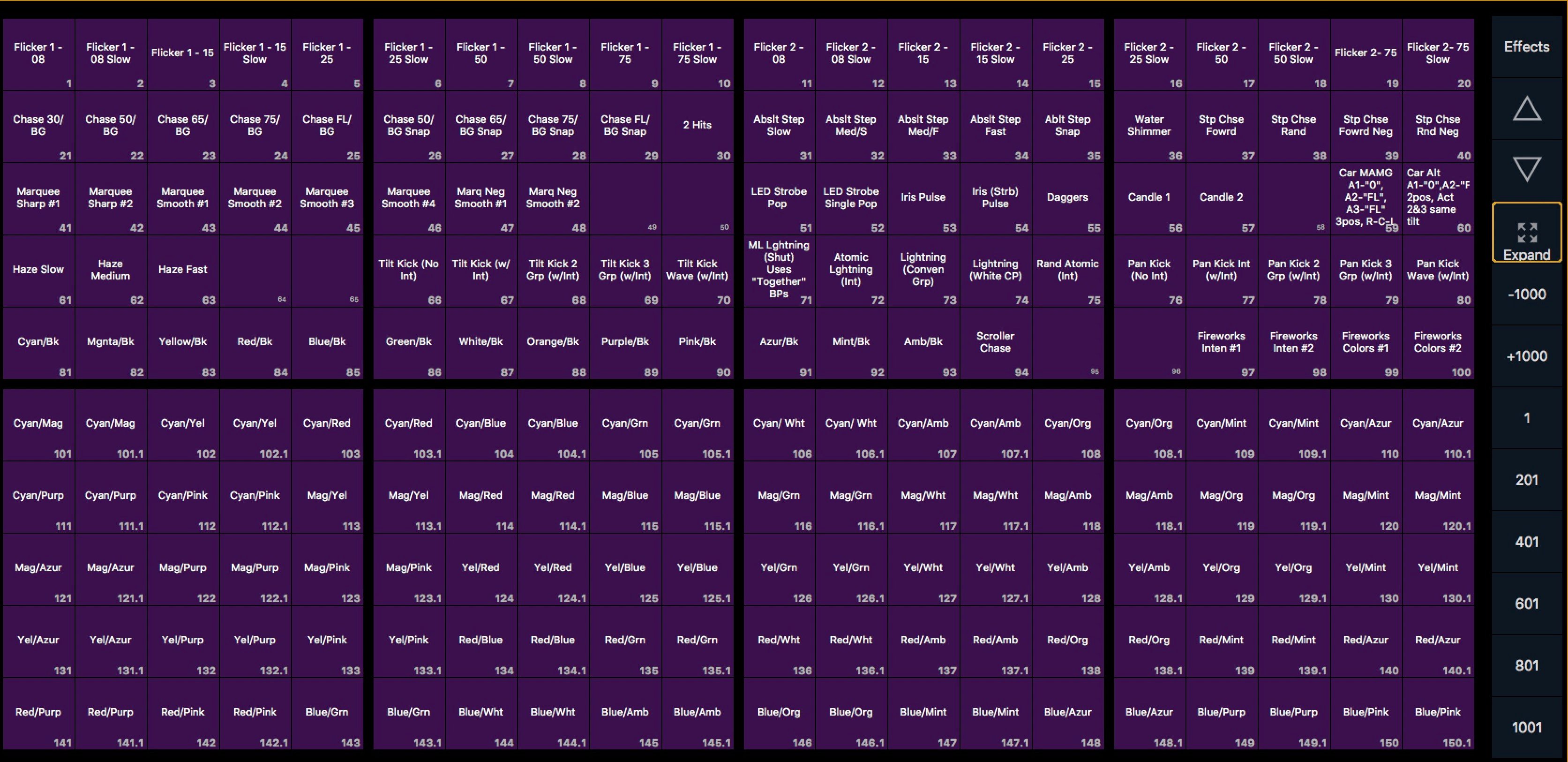
All of the color and beam based effects use my existing Col Pals and Beam Pals. That means if I mix to a Cyan I like for a particular light, any FX using the Cyan color pal will also now be reflected. And since you can adjust nearly all FX attributes on a per cue basis (Rate, Size, Grouping, Entry Time etc), I can create an infinite number of variations on these root effects based on the needs of the cue.
SUBMASTERS:
My template file has a list of pre-made submasters.
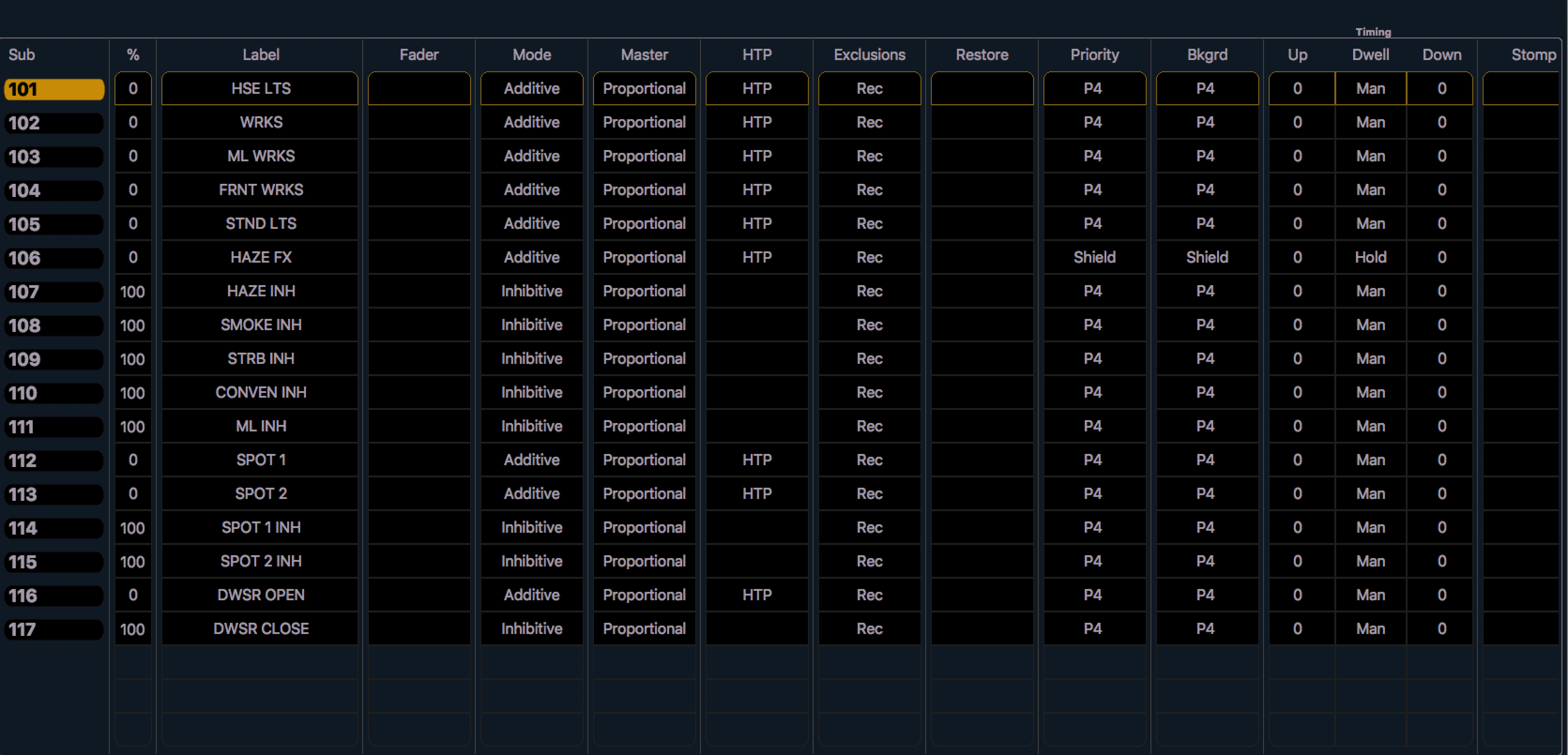
There is no data in them but they are made, labeled, and have all their properties already set. All that is left to be done is put in the proper channels and assign them to a fader.
Some of those submasters include:
- Various Work Light Subs
- Haze FX/Haze Inhibit
- Other FX Inhibitors for things like Smoke and Strobes
- Inhibitors for all Conventional lights and all Moving Lights
- Additive and Inhibitive subs for Follow Spots (for when they are run through the console)
- Additive and Inhibitive subs for Projector Dowsers
PRESETS:
Presets are a little trickier. I haven’t gotten too much into pre-viz so I’m not making moving light Presets in a virtual space before getting in to the theatre (although I could see myself doing that at some point) But that doesn’t mean I can’t save time by having some pre-made presets. High up in the 900s I have some pre-made presets. Some have data, some are just empty.
They include:
- Various color gradients that be recalled when using Pixel Mapping
- Presets used in my Haze FX (one for “on”, one for “off”)
- Highlight/Lowlight Presets
- ML Worklight, Reference, and Home Presets

Some of these presets have info for every fixture in my list like Highlight and Lowlight levels, and those presets are set to be By Type.
If the show has a fair number of moving lights that I will be using to create various washes, I figure out in advance what all those generic systems might be, and then create the presets in a logical order and pre-label them.

I also will map out how I’m going to store all the new presets that are made during tech. Depending on the show, I like to group them either by Scenic Location or by Scene. I will allocate a block of presets for each section and then pre-make a starting preset that is just the name of that block such as *1-1 THE PARK or *SHAPOOPIE or *PULITZER’S OFFICE.
It may seem silly to do all this in advance, but if tech stops for 10 seconds while you and your programmer discuss how to organize the presets so they are not in one giant mess, that is 10 seconds you are not cueing. I will even go as far to pre-make specific presets with their labels if I know I’m going to need them. Maybe a moment I saw in the rehearsal, or something the director has asked for, or something that will obviously be a unique preset. i.e ‘ROSE’S TURN BUTTON’ or ‘GAMBLER POOLS’ or ‘MARIUS DIES.’ I’ll then write that preset number in my script next to the cue, so I know exactly where to update the light when we hit that point.
During the time the programmer and I have between focus and tech (hopefully you’ve angled for at least a couple hours) I will focus as many of those generic presets as possible. We then LOCK those presets so they can’t be easily destroyed. If I’ve had time in advance, I sometimes even make a list of what lights should go into each generic preset. I can then give that list to the programmer so they can work on building them on their own if I need to step away. (It’s worth noting here that I often don’t have an assistant or if I do, it’s someone local I’ve just met who doesn’t really know my workflow yet. On a show where I do have an assistant that I’ve hired, they are able to take on some of these duties and work with the programmer.)
GROUPS:
These I make per show. They can be very useful for focus instead of having to call out ranges of channels but there usually isn’t time to sit and make them prior to focus. I never want to waste time building groups sitting in the theater.
MACROS:
I have lots of macros that I’ve created/gathered over the years. I store them in the 5000s so it’s unlikely they will overlap with any macros already on the house console. They expedite all sorts of tasks like recording presets, grabbing all shutters, changing flexi states, and marking lights. They also correspond to a set of X-Keys I travel with that sometimes I use, or sometimes I give to the programmer. But where the macros really come in handy is on Magic Sheets.
Up next…
Continue to Part 4, where I’ll share how I map many of these record targets to magic sheet buttons for even faster programming. We’ll also look at how updated “in the theater” information gets rippled back into my template file after the show opens.


